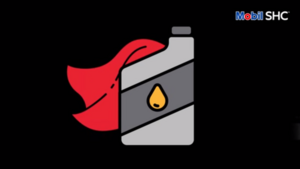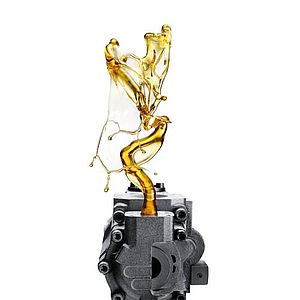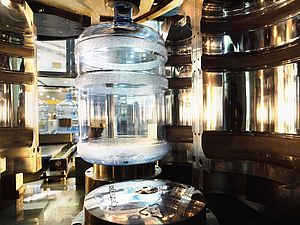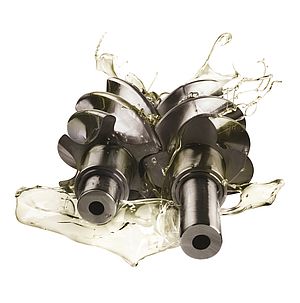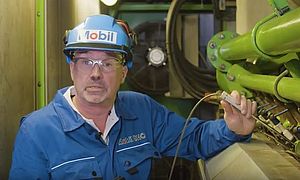Gas turbines are an efficient means of power generation that can be quickly deployed during times of peak demand. Derek Selby, ExxonMobil’s EAME Industrial Product Technical Advisor, explains how high-performance lubricants can help maintain optimum performance by minimising varnish formation.
In gas turbines today, there has been a shift in equipment trends which has resulted in greater power density, improved efficiency and a reduced CO₂ footprint. These changes have led to longer oil-life for turbine lubricants but, in certain conditions, can also trigger the formation of lubricant related varnish. Left unchecked, this can result in avoidable maintenance and unproductive downtime, which has the potential to generate unnecessary expenditure and damage bottom line performance.
It is broadly considered that the high firing temperatures in turbines, exceeding 1,500°C, can lead to the excessive thermal stress of lubricants and the rapid onset of varnishing formation. This thermal exposure is exacerbated by the start/stop operations that are employed by many gas turbine operators to manage the supply/demand balance of electrical power generation, which results in perpetual cyclic heat soak and cooling during each shut-down sequence.
An industry-wide problem
These types of complications can result in sticking valves and servos, a loss of heat transfer in heat exchangers, filter plugging, lubricant deterioration and potential bearing damage. According to an ExxonMobil survey of 192 gas turbine power plants, running a combined 626 gas turbines, approximately 40% of turbine operators report current or historical issues with oil varnish within the first six years of service.
Turbines with common hydraulic and bearing reservoirs are far more susceptible to issues related to varnish than turbines with segregated reservoirs. Depending on operation and design, these units may suffer from hydraulic valve sticking of air or/and fuel valves, resulting in units failing to start when required and causing unplanned maintenance.
For this reason, early oil varnish detection and prevention is extremely important for common hydraulic/turbine reservoirs, compared with turbines that have separate hydraulic and turbine reservoirs.
Aside from hydraulic valve issues, units may also experience varnish build up on various system parts e.g. bearings, reservoirs, pipe work etc. In particular, this can interfere with the bearing lubrication, and the build of a film on the bearing can interfere with its cooling of the bearing, and result in an increasingly hotter running bearing. This can then result in unscheduled down time and production interruption in order to fix such bearings.
The solution
With such designs and necessity to operate in such conditions, a key element to minimising varnish
formation is the specific lubricant design. It not only needs to withstand high temperatures, and the
resulting thermal degradation, it should ideally also offer:
- Good system protection
- Deposit control and ability to manage any oxidation that occurs
- Excellent load carrying
- Component protection corrosion
- Rapid separation from water and air
- Low volatility characteristics
Mobil SHC 800 Ultra Series have been specifically formulated to provide exceptional protection against thermal/oxidative degradation, with an outstanding RPVOT of typically +3000 min and outstanding keep-clean performance with specific deposit and varnish control.
Mobil SHC 800 Ultra Series also feature the exceptional interfacial properties, in particular steam and water separation, required for modern high performance steam turbines. Mobil SHC 800 Ultra Series’ strong anti-wear performance is designed to meet load-carrying requirements of geared turbines.
ExxonMobil has used its extensive lubricant experience to develop a range of oils suitable for use in even the most severe gas turbine environments. Using synthetic base stock and a specially selected proprietary additive combination, Mobil SHC™ 800 Ultra Series oils have been specifically formulated to provide exceptional protection against thermal/oxidative degradation and outstanding keep-clean performance with specific focus on today’s challenges of deposit and varnish control. They also provide excellent anti-wear properties as well as protection against rust and corrosion, plus superb air release performance and resistance to foaming.
The high performance lubricants also possess superb demulsibility properties with both water and steam, helping to minimise corrosion and the formation of an undesirable stable emulsion. The outstanding air separation feature offered by the oils can also help to prevent oils becoming compressible. If left unchecked, this can reduce the efficiency of hydraulic control systems and potentially lead to damaging cavitation of pumps.
Mobil SHC 800 Ultra Series oils are suitable for applications where a turbine shares a common reservoir with a generator or compressor and gear box. As a result, this can help to increase operator flexibility and reduce inventory.
The performance features of Mobil SHC 800 Ultra Series oils translate into excellent equipment protection, reliable operation, with reduced down-time and extended oil life. These products also
provide the ultimate flexibility to the operator due to the extensive use in a wide variety of turbine types
Tackling varnish formation
The Celanese chemical plant in Belgium was having issues with one of its Siemens SST 060 steam turbines. The unit was suffering from a high level of varnish formation, which resulted in unscheduled downtime and excessive oil consumption. ExxonMobil recommended a switch to Mobil SHC™ 846 Ultra, one of its newly formulated turbine oils, in combination with oil cleaning, flushing and filtration to remove the varnish deposits.
The trial resulted in positive feedback – Celanese was impressed by the used oil analysis data, which showed outstanding protection against varnish build-up and sludge formation. As a result, oil drain intervals were safely extended, which reduced waste oil disposal by 1,500 litres and increased equipment availability. In combination, these offered Celanese a potential benefit of €72,000.
Find out more here.





